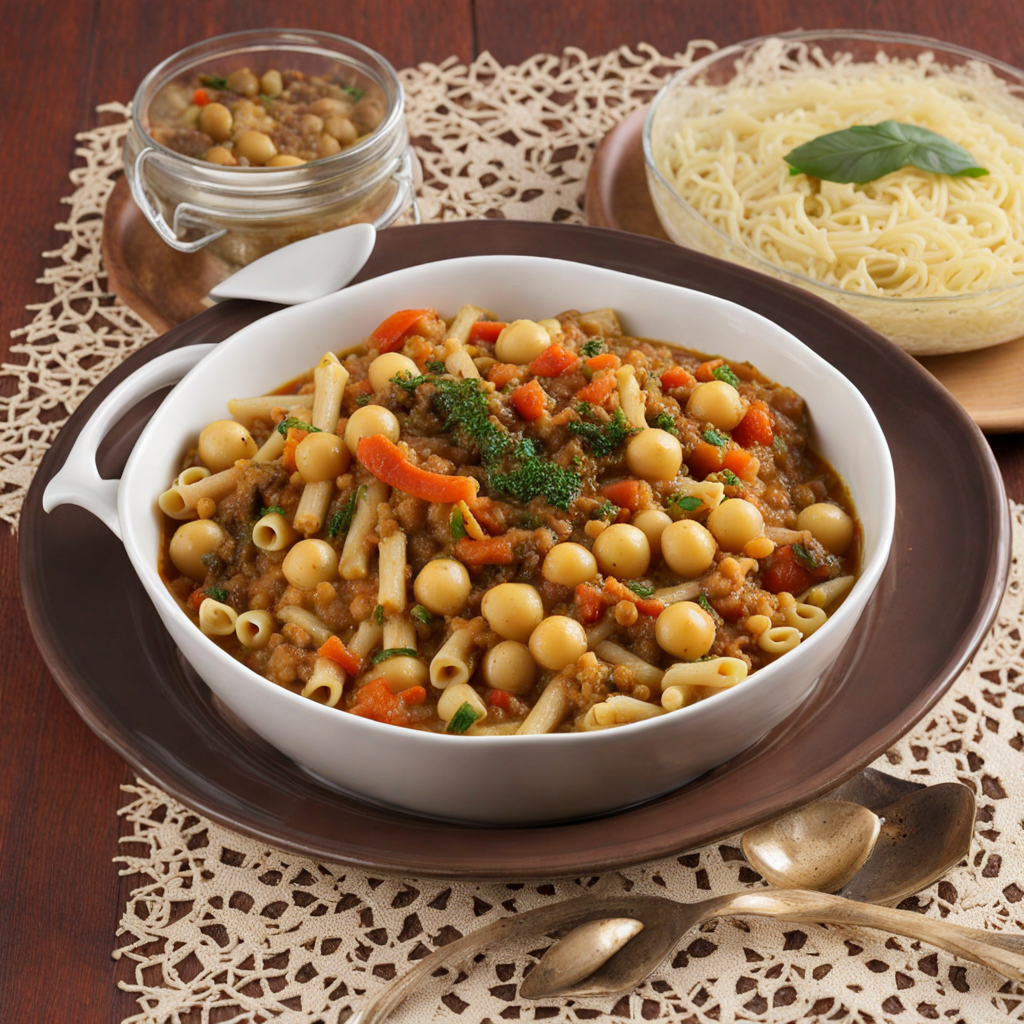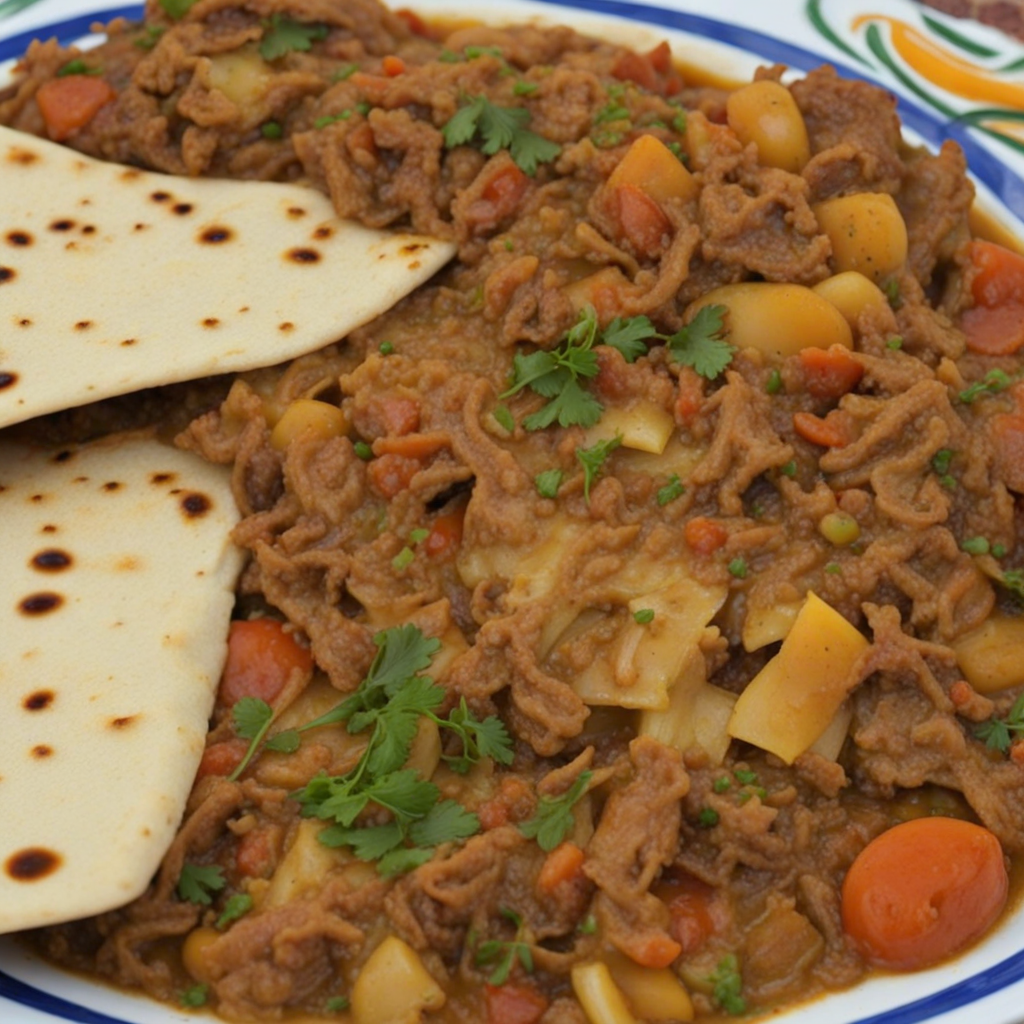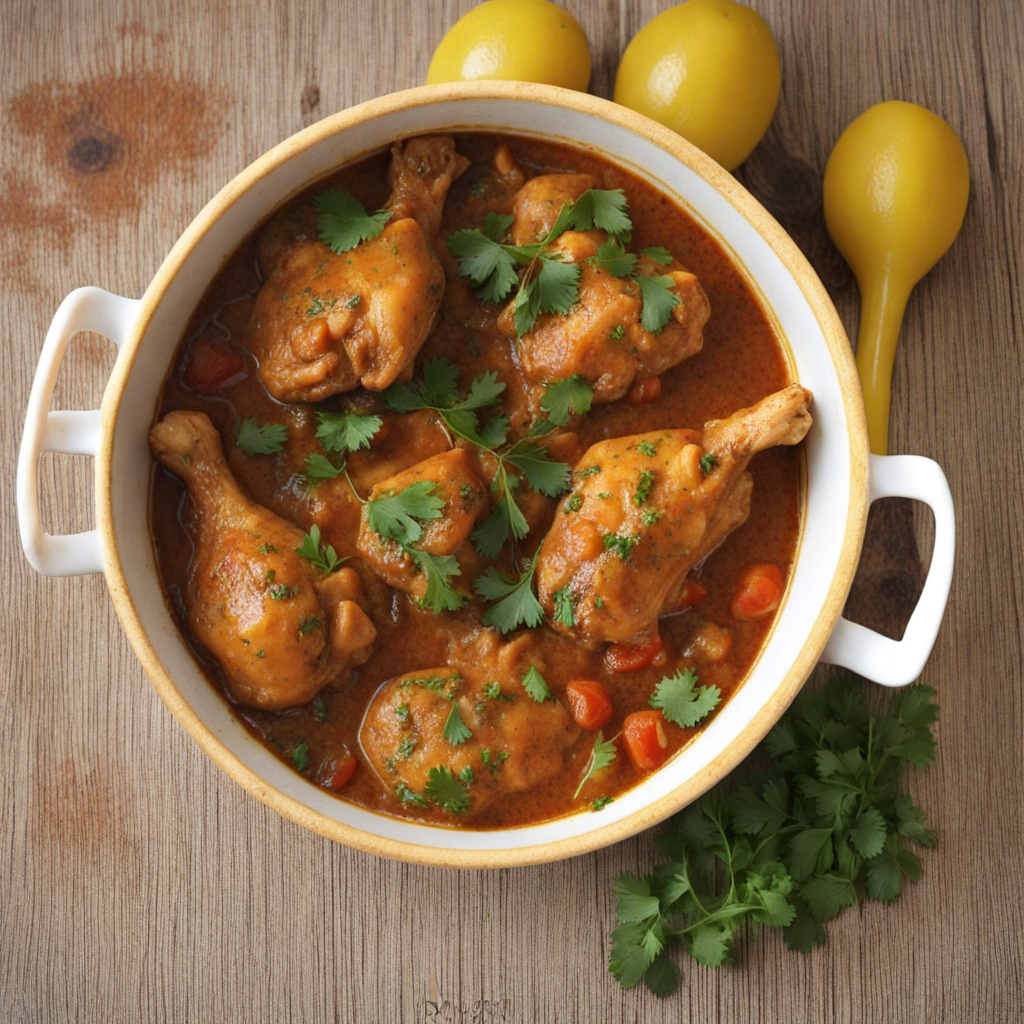Berkoukes
Berkoukes is a traditional Algerian dish that showcases the rich culinary heritage of the region. This unique dish is made from large, round grains of semolina, which are steamed and often mixed with a variety of meats, vegetables, and spices. The cooking process involves a special pot called a "couscoussier," where the semolina is steamed over a flavorful broth that usually includes lamb or chicken, along with a medley of seasonal vegetables like carrots, zucchini, and chickpeas. The result is a hearty, aromatic meal that is both comforting and nutritious, embodying the essence of Algerian home cooking. One of the standout features of Berkoukes is its versatility. While the base ingredients remain fairly consistent, cooks often customize the dish with various spices such as cumin, coriander, and paprika, giving it a distinct flavor profile. The grains absorb the savory broth, becoming fluffy and infused with the essence of the meats and spices. Furthermore, Berkoukes can be served with harissa, a spicy chili paste, allowing individuals to adjust the heat level to their liking and adding an extra layer of complexity to the dish. Traditionally enjoyed during family gatherings or special occasions, Berkoukes represents more than just a meal; it signifies community and shared experiences. As you savor each bite, the combination of textures—from the tender meat to the soft, steamed grains—creates a delightful contrast. This dish is not only a feast for the palate but also a celebration of Algerian culture, inviting food lovers to explore a taste that is deeply rooted in the country’s history and traditions.
How It Became This Dish
Berkoukes: A Culinary Journey Through Algeria's Rich Heritage Origins of Berkoukes Berkoukes, a traditional dish from Algeria, serves as a delightful representation of the country's rich culinary heritage. This hearty dish is essentially a type of soup or stew that features handmade semolina pasta known as "berkoukes" (or "berkous" in some regions) and is often prepared with a variety of vegetables, meats, and spices. The origins of berkoukes trace back to the Berber communities of North Africa, particularly in the mountainous regions of Kabylie and Aurès, where the dish has been a staple for centuries. The name "berkoukes" is derived from the Berber word "berkuks," which means “to cook” or “to boil.” The dish embodies the essence of Berber cooking, which relies heavily on local ingredients and traditional preparation methods. Historically, the Berbers were semi-nomadic people who cultivated grains and raised livestock. It is believed that berkoukes was created as a means to make use of durum wheat, which is abundant in the region. This pasta-like dish reflects the agricultural practices of the Berbers, who harvested wheat and barley, and adapted them into their daily diets. Cultural Significance Berkoukes is not merely a dish; it is a symbol of hospitality and community in Algerian culture. In many households, especially during family gatherings, weddings, and religious celebrations, berkoukes plays an essential role in bringing people together. The act of sharing a large pot of berkoukes around a communal table fosters a sense of unity and belonging, reinforcing social ties and cultural identity. In Algerian society, food is intertwined with tradition and ritual. Berkoukes is often served during important occasions, such as Eid al-Adha, where families prepare the dish with lamb or beef, signifying abundance and gratitude. The meal’s preparation can also be a communal activity, with family members coming together to make the pasta from scratch, emphasizing the bonds of kinship and shared heritage. Moreover, the dish has transcended regional boundaries within Algeria, adapting to local tastes and customs. In some urban areas, berkoukes may feature a variety of spices and ingredients, while in rural settings, the dish remains more traditional, highlighting simplicity and the use of fresh, locally sourced produce. Development Over Time As Algeria's culinary landscape evolved, so did berkoukes. The dish has experienced numerous variations, influenced by the diverse cultures that have shaped the nation’s history, including the Arabs, Ottomans, and French. Each of these groups contributed to the flavors and techniques found in contemporary berkoukes. The introduction of tomato sauce and spices such as cumin and coriander can be traced back to Arab influences. These spices not only enhance the dish's flavor but also reflect the broader Arab culinary practices that permeated Algerian kitchens. The Ottomans, who ruled Algeria for over three centuries, brought their own culinary traditions, which further diversified the preparation of berkoukes. The inclusion of saffron and other aromatic herbs became more common, giving the dish a unique character that sets it apart from other North African pastas. During the French colonial period (1830-1962), Algerian cuisine underwent significant transformations due to the introduction of new ingredients and cooking techniques. While many traditional dishes faced dilution, berkoukes managed to retain its essence, adapting only slightly to incorporate locally available ingredients. The dish was often made in large quantities, making it suitable for feeding large groups of people, a necessity during times of economic hardship. In contemporary Algeria, berkoukes has regained popularity as a symbol of national pride and cultural identity. Many chefs and home cooks alike are embracing traditional recipes, ensuring that the art of making berkoukes is passed down through generations. The resurgence of interest in traditional Algerian cuisine has also led to the reinvention of berkoukes, with modern twists that appeal to younger palates without losing the dish's authentic roots. The Modern Berkoukes: Variations and Ingredients While the traditional version of berkoukes is made with semolina dough, water, and salt, contemporary interpretations may include various ingredients and accompaniments. The semolina is kneaded into a firm dough, then rolled into small pieces before being either boiled or steamed. The resulting pasta is typically combined with a rich broth made from meats—often lamb, chicken, or beef—and a medley of seasonal vegetables such as carrots, zucchini, and chickpeas. In addition to the classic preparations, modern chefs experiment with flavors by incorporating harissa (a spicy chili paste) for heat, or even adding dried fruits like raisins or apricots, reflecting the dish's adaptability. Vegetarian versions are also popular, catering to the growing number of people seeking plant-based options. These variations showcase how berkoukes can be both traditional and innovative, appealing to diverse tastes while honoring its origins. Conclusion Berkoukes is a dish that tells the story of Algeria's rich cultural tapestry, embodying the traditions of the Berber people while adapting to the influences of various cultures throughout history. Its significance extends beyond mere sustenance; it represents community, hospitality, and the importance of shared meals in fostering social bonds. As the world becomes increasingly globalized, dishes like berkoukes serve as vital connections to cultural heritage and identity. By celebrating traditional foods and preserving the techniques of their preparation, Algerians ensure that the flavors of their past continue to resonate in contemporary kitchens. In this way, berkoukes remains not only a delicious meal but a testament to the enduring spirit of Algerian culture, a culinary masterpiece that continues to evolve while honoring its roots.
You may like
Discover local flavors from Algeria







